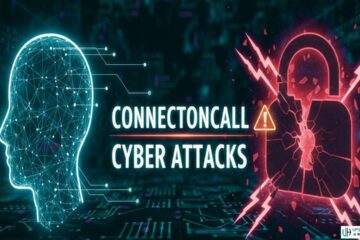As digital risks multiply daily, protecting yourself against fraudulent behavior has never been more essential. Cybercriminals are constantly devising new methods of bypassing security systems, so it’s essential for businesses to remain one step ahead.
In this blog post, we outline seven effective tactics to strengthen digital defenses. Everything from monitoring user access rights to strengthening authentication processes is an essential component of a strong cybersecurity toolbox and should be put into effect to lower the chances of fraudster activity.
Read on as we discuss these crucial processes for making sure your systems are reliable and safe.
Implement Strong Authentication Measures
Adopting robust authentication measures is one of the best strategies to prevent illegal access to your system. Multi-factor authentication (MFA), in particular, requires users to provide two or more verification factors before accessing a system, thus adding another layer of protection against illegal access and hacker invasion.

MFA makes it harder for hackers to gain entry even with stolen user credentials, drastically decreasing the risk associated with fraudulent activities and increasing overall system security.
Monitor User Access Rights
Monitoring user access rights is an indispensable way of strengthening any system’s security posture. This proactive measure involves reviewing which individuals have access to specific areas within your system and making sure each level of privilege corresponds with each job function appropriately. No longer should security concerns revolve solely around preventing unapproved access; rather, ensuring that any authorized access doesn’t become an entryway for potential security breaches.
Regular audits of user roles and permissions, combined with access control technologies can significantly lower the risk of data leaks and other forms of cyber fraud. Tailoring access according to the principle of least privilege helps organizations reduce their attack surface while guaranteeing users only have as much access as necessary for performing their duties effectively.
In that context, compensating controls are indispensable when primary security measures fail or fall short, providing an additional layer of defense that makes up for any flaws in your primary defense mechanisms. If it isn’t feasible to implement robust encryption across an entire network, compensating controls could help mitigate risks. Their implementation shows an organization’s dedication to multilayered security practices and strengthens its resilience against cyber threats.
Regularly Update and Patch Your Systems
Hackers use software flaws as entryways into your system. To protect against these vulnerabilities, patching and updating software on an ongoing basis is key.

Software providers regularly release patches and upgrades to address security vulnerabilities within their product’s security framework, providing another layer of defense against known vulnerabilities exploited by hackers.
By keeping it updated, you can protect yourself against them.
Educate Your Employees
Human error is one of the primary sources of security breaches, so to reduce fraud risk, it’s vital that staff members understand the value of cybersecurity education and equip themselves with the skills needed to identify and stop potential security threats.
This means teaching them how to recognize phishing emails, create secure passwords and abide by company internet and data protection guidelines.
Monitor and Analyze System Activity
By monitoring your system constantly, you can detect suspicious activity early and stop any breaches. Installing a security information and event management (SIEM) system could prove invaluable.
SIEM systems aggregate and examine information from various network sources in order to detect anomalous patterns that indicate potential security threats. By keeping an eye on system activity, you can react swiftly should any threats present themselves before they cause severe harm.
Secure Your Network
In 2023, the average cost of a data breach was $4.45 million. Network security serves as the primary defense against fraudulent activities on your system.
This encompasses employing secure Wi-Fi networks, encrypting sensitive data during transit, and implementing firewalls to prevent unauthorized access.
Furthermore, virtual private networks (VPNs) offer additional safeguards against unwanted access for remote systems as they guarantee data transfer over the internet securely.
Conduct Regular Security Audits
Conducting routine security audits is essential for locating and fixing holes in your system. Audits should cover every facet of your cybersecurity strategy, such as network, physical, policy and process security.

They allow you to identify any holes in your system and plan how best to patch them. Consulting cybersecurity specialists could give invaluable advice on how best to secure it further.
Final Thoughts
Due to the serious threat posed by fraudulent activity on your system, you must employ an inclusive and preventive cybersecurity plan.
Strong authentication methods, frequent patching and updates to systems, training of employees on system activity monitoring and protection strategies as well as conducting security audits can significantly decrease cyber threats.
Building resilience is just as essential to protecting your system against threats as quickly recovering after a breach.
By taking these precautions, you can help ensure the sustainability and profitability of your company in the digital era by safeguarding against an ever-evolving landscape of cyber threats.
See Also: The Impact Of A Well-Written Business Plan On Securing Funding From Investors










